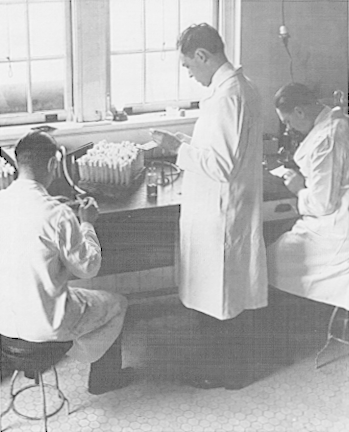Drinking water standards
Yesterday's This Day in Water History had this quote from the AWWA's Water Quality and Treatment (3rd ed., 1971) (most comments removed):
“On October 21, 1914, pursuant to the recommendation of the Surgeon General of the Public Health Service, the Treasury Department adopted the first standards for drinking water supplied to the public by any common carrier engaged in interstate commerce. These standards specified the maximum permissible limits of bacteriological impurity, which may be summarized as follows:
- The bacterial plate count on standard agar incubated for 24 [hours] at 37 C was not to exceed 100/cc.
- Not more than one of the five 10-cc portions of each sample examined was to show presence of B. coli.
- The recommended procedures were those in Standard Methods of Water Analysis (APHA, 1912).
These standards were drafted by a commission of 15 appointed members. Among the members of this commission were Charles Gilman Hyde, Milton J. Rosenau, William T. Sedgwick, George C. Whipple and C.-E. A. Winslow, names well known to those who have studied early developments in water treatment.
Though not a part of the standards, the accompanying first progress report is very interesting as it provides insight into the commission’s deliberations on other problems. There appears to have been considerable discussion on whether the standards should also state that the water shall ‘be free from injurious effects upon the human body and free from offensiveness to the sense of sight, taste, or smell’; whether the quality of water required should be obtainable by the common carriers without prohibitive expense; and whether it would be necessary to require more than a ‘few and simple examinations to determine the quality of drinking water.’”
 |
| US Public Health Service Hygienic Laboratory, c. 1930 |



Comments
Post a Comment